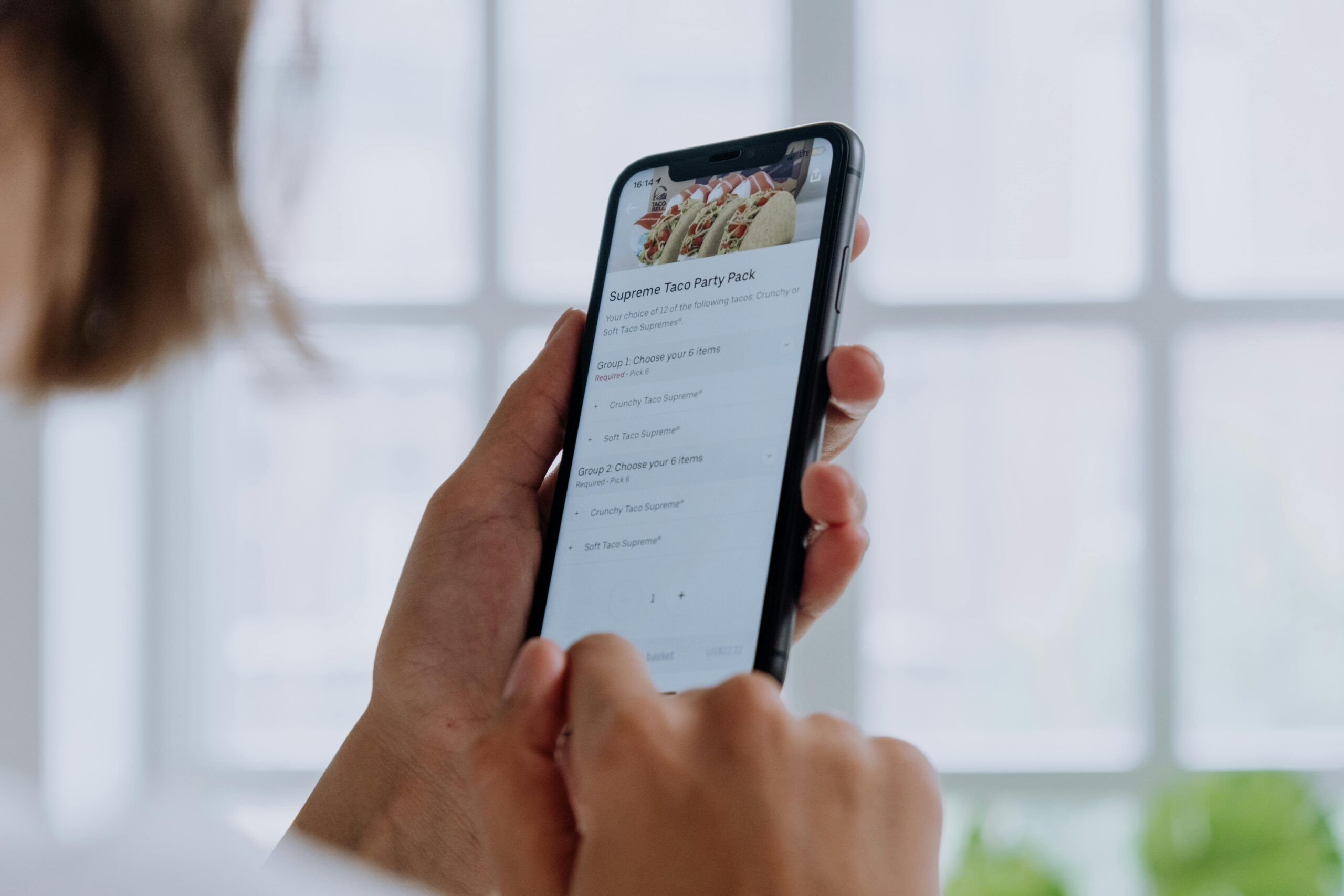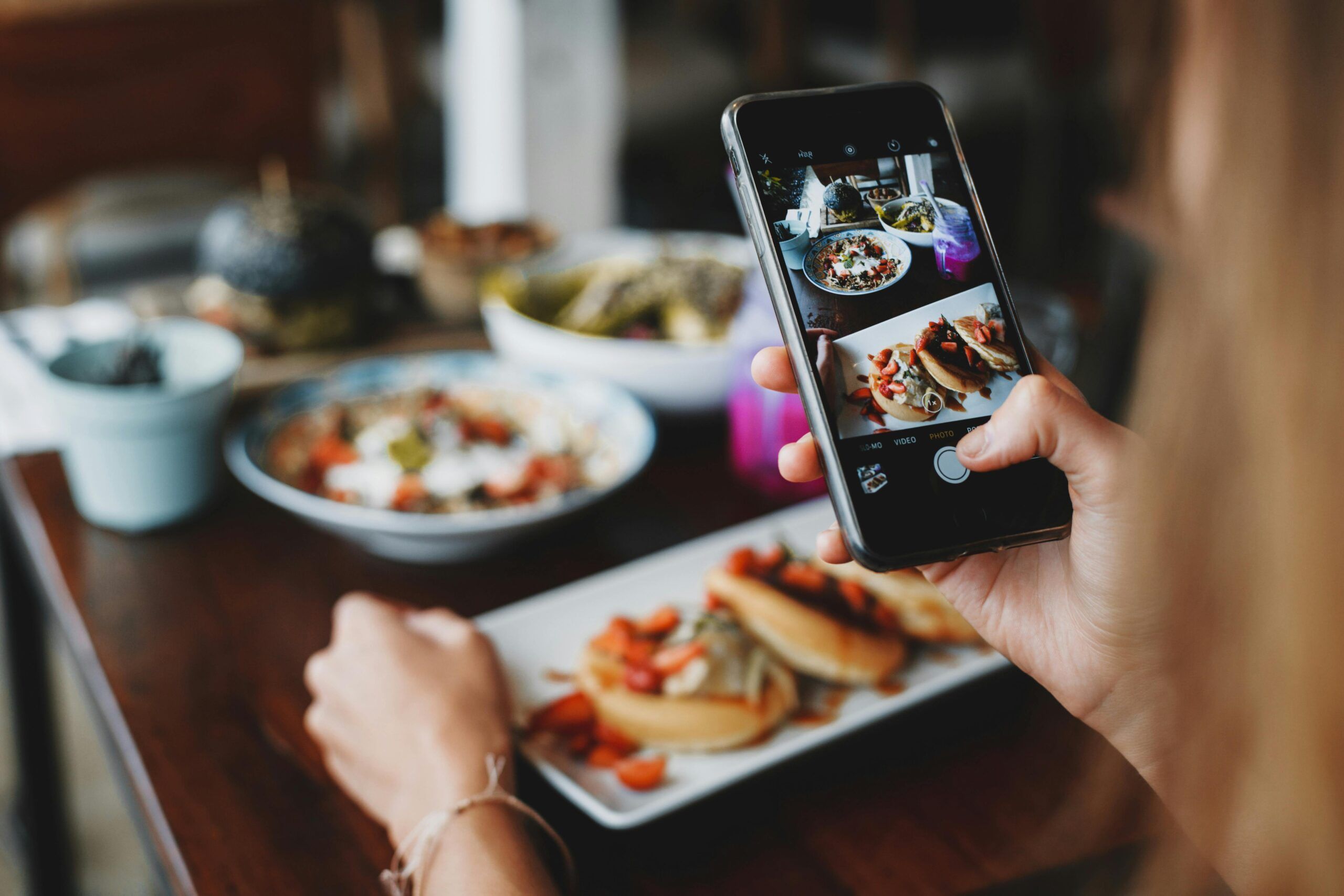- Why The Restaurant Menu Planning Process Matters?
- What Is the First Step in Planning a Menu?
- How to Balance Creativity and Profitability?
- How Orders.co Supports Smarter Menu Planning?
- Final Thoughts
- FAQ
Your menu is one of the most important parts of your restaurant. It affects your costs, how your staff work, and what your customers order. That’s why a thoughtful restaurant menu planning process is essential for success.
If it’s well planned, it helps you serve faster, waste less, and sell more. If it’s not, you might lose money without even realizing it.
This article covers five key elements every restaurant owner should include when planning or updating their menu. These tips are easy to apply and based on real business needs, not trends or guesswork.
If you’re looking for ways to improve how your menu performs and how your team manages it, Orders.co’s restaurant menu management tools can help.
You can build, edit, and organize your menus in one place, with real-time updates across delivery apps, in-store displays, and your website. The system supports importing your existing menu, making adjustments simple.
Key Takeaways
- Start by defining your restaurant concept and target customer.
- Choose ingredients that are affordable, available, and easy to prep.
- Price every menu item based on food cost, demand, and profit margin.
- Design your menu layout for clarity, simplicity, and easy updates.
- Use data and customer feedback to test, adjust, and optimize your menu.
Why The Restaurant Menu Planning Process Matters?
The importance of menu planning in a restaurant goes beyond just listing dishes. Your menu affects profit, operations, and customer satisfaction.
Getting it right helps you manage resources better and serve your guests more effectively.
1. Profit Impact
A well-structured menu helps you avoid low-margin items and focus on what sells. Pricing and portion control keep food costs in check.
In fact, 70% of restaurant owners say the restaurant menu planning process directly improves profitability. This shows how much impact the right menu can have on your bottom line.
2. Smoother Operations
Menus built around your kitchen’s capacity reduce prep time and staff errors. Fewer complex items mean faster service and fewer mistakes.
3. Better Guest Experience
Menus that are clear, easy to read, and balanced make ordering faster. When guests find what they want quickly, they’re more likely to return.
4. Easier Training
New staff can learn faster when the menu is focused and consistent. Fewer dishes and clear ingredients lead to fewer mistakes and better service.
What Is the First Step in Planning a Menu?
The first step is defining your restaurant’s concept and customer base.
You need to decide what type of food you want to serve and who you want to serve it to. This includes understanding your cuisine style, price range, service type (quick service, casual dining, etc.), and target guests.
Ask yourself:
- What type of food fits your kitchen and staff skills?
- Who are your ideal customers? What are their dining habits?
- What do they expect in terms of price, portion size, and variety?
This step sets the foundation for every decision that follows, including ingredients, pricing, prep time, and even how the menu looks.
The importance of menu planning in a restaurant is often underestimated. But a clear and focused menu helps with cost control, smoother operations, and better guest experiences. It also supports your staff and keeps your brand consistent.
Below are five key elements that every restaurant owner should consider when building or updating a menu.
These steps help you make better business decisions, avoid waste, and improve daily service.
1. Menu Concept Alignment
What is usually the first step in planning a menu? It starts with aligning your menu to your restaurant’s concept.
If you run a quick-service spot, your menu should be simple and fast to prepare. If you offer sit-down service, you can include more variety and longer prep items.
Next, think about your customers. What do they want? Are they looking for affordable meals, dietary options, or specialty dishes? Your menu should reflect these preferences without going off-brand.
Keep your food choices consistent with your kitchen setup and staff skills. Offering too many types of dishes can slow down service and increase waste.
Quick tips:
- Keep your menu size realistic for your team and kitchen.
- Focus on dishes that fit your brand and appeal to your customers.
- Avoid mixing too many food styles that confuse your diners.
2. Ingredient Availability and Cost Control
The restaurant menu planning process also means working with what’s practical. That includes checking ingredient availability, costs, and how your kitchen handles them.
Start by focusing on ingredients that are easy to source and store. If your dishes depend on rare or imported items, they could quickly become unavailable or too expensive. This can hurt your margins and create supply issues.
Use seasonal ingredients whenever possible. They’re usually fresher, more affordable, and easier to get. Seasonal updates also give you a reason to make small changes to your menu and keep it interesting for regulars.
Be realistic about your storage capacity and prep times. Complex dishes with many perishable ingredients can increase waste and slow down service. Simple, well-prepared items are easier to manage and often perform better.
What to focus on:
- Use ingredients with stable pricing and availability.
- Avoid dishes that need extensive prep or specialized storage.
- Plan regular updates with seasonal options to stay flexible.
Reducing food waste, improving prep time, and keeping ingredient costs under control will make your kitchen more efficient and help you protect your bottom line.
3. Profit Margin Optimization
Your menu should support your bottom line. Every item must be priced based on cost, demand, and how well it performs.
Track Your Food Cost Percentage
Start by calculating how much each dish costs to make. Then compare it to the selling price. Most restaurants keep food cost percentages between 28% and 35% [source].
If a dish is too expensive to produce and doesn’t sell well, it’s time to rethink it.
Focus on Best-Selling Items
Use your sales data to see which items are most ordered and have the best profit margins. These are the dishes that work hardest for your business. Place them in high-visibility spots on the menu and train staff to recommend them.
At the same time, identify dishes that are low in profit and low in sales. You can remove or rework them to avoid waste and free up kitchen resources.
Use Simple Pricing Psychology
Where and how you show prices matters. Use clean pricing, whole numbers, or prices that end in .95 or .99. These feel familiar and easier to accept.
Also, place your most profitable items at the top or bottom of menu sections. These areas tend to get more attention and help guide customer choices.
4. Visual and Digital Presentation
A well-designed menu helps customers make faster decisions and improves the overall dining experience. It also gives your best-selling items the visibility they need to drive more revenue.
Keep the Layout Simple
- Use clear section headers like Appetizers, Mains, and Desserts
- Avoid clutter; leave enough space between items
- Choose readable fonts and font sizes that work in low light
- Limit the number of fonts and colors to avoid visual overload
Use Clear, Concise Descriptions
- Focus on ingredients and the preparation method
- Include allergen information using symbols or short notes
- Align prices consistently to the right or left of each item
- Highlight high-margin or popular items using clean visual cues (e.g., boxes or bold text)
Offer a Digital Version
- QR code menus allow customers to view the latest updates
- Digital menus reduce printing costs and are easy to adjust
- Ideal for rotating specials or seasonal updates
Ensure Consistency Across Channels
- Match your dine-in, takeout, and delivery menus
- Keep item names, prices, and descriptions the same everywhere
- This reduces confusion and ensures a consistent brand experience
To reduce confusion and ensure a consistent brand experience, use Orders.co’s Free QR Menu Tool. Orders.co provides a free QR menu maker app that helps you create, update, and share menus quickly.
It’s easy to use, improves ordering speed, and lets guests view detailed dish info. While layout customization is limited in the app, full branding is available if the QR links to a custom website.
5. Performance Testing and Iteration
Once your menu is live, tracking its performance is key to keeping it effective.
Track Item Performance
Look at the numbers. Which items are selling the most? Which ones rarely get ordered? Knowing this helps you keep dishes that bring in sales and remove those that don’t.
Pay Attention to Customer Feedback
Listen to your guests. If people leave feedback about portion sizes, pricing, or ingredients, use that to make informed adjustments. Positive reviews can also highlight which dishes to feature more prominently.
Test Before Committing
Try A/B testing. This means showing different versions of your menu, like a new layout or different pricing, to different groups of customers. It helps you see what gets better results before making a full switch.
Use a Tool That Makes This Easy
Orders.co gives you real-time menu performance data. You can compare how items perform across channels, view best sellers, and monitor guest behavior. This data helps you make clear decisions without the guesswork.
The restaurant menu planning process isn’t one-and-done. Keep testing, adjust when needed, and stay focused on what works.
How To Balance Creativity And Profitability?
Good menu planning means being creative without hurting your bottom line. You want to offer meals people get excited about, but also dishes that are cost-effective and easy to deliver consistently.
Focus on What Works
Stick to your top-performing items. These are dishes your team prepares well and that customers already love. Keep them on the menu and promote them as your core offering.
Use Specials to Test New Ideas
Introduce new dishes as limited-time offers. It’s a simple way to try something different without overcommitting. You’ll see what sells and collect feedback from your customers.
Watch Ingredient Costs
Creative dishes can get expensive fast. Before adding something new, check how it fits your food cost goals. If the item needs rare or high-priced ingredients, consider alternatives that are easier to source or store.
Adjust Without Compromising Quality
If a dish is popular but expensive to make, look for ways to reduce costs without changing its appeal. This could be a portion size adjustment or replacing a costly ingredient.
Review Results Regularly
Creativity should be supported by data. If something new doesn’t perform well, take it off the menu. If it becomes a favorite, consider making it permanent.
Balancing creativity with profitability isn’t about limiting your menu. It’s about testing, reviewing, and making smart choices.
How Orders.co Supports Smarter Menu Planning?
The restaurant menu planning process takes time, and keeping it effective takes even more. Orders.co helps simplify the process with tools that give you better visibility and control.
Real-Time Menu Performance Tracking
See how each item performs across all platforms, delivery apps, your website, and in-store. Know what sells, what sits, and what brings in profit.
Easy Menu Updates
Make quick edits to prices, descriptions, and item availability. You can update your menu in one place, and it syncs across all connected channels. No extra work.
Data That Helps You Decide
Our system shows you best sellers, slow movers, and low-margin items. You can make informed choices about what to keep, adjust, or remove, based on real numbers.
A/B Testing Tools
Try new layouts, pricing, or item names. Orders.co helps you test and compare results, so you’re not guessing what works best.
POS and Delivery Platform Integration
Orders.co connects with over 30 POS systems and major delivery platforms. That means your menu stays consistent and your data stays accurate; no need to manage separate menus.
Want to go deeper into how menu software can support your operations? Here’s a complete guide to selecting a restaurant menu management system.
Want to see it in action?
Schedule a free demo or explore how our menu management tools work.
Final Thoughts
A well-planned menu supports daily operations and long-term growth. It helps you control food costs, improve order accuracy, and deliver a better customer experience. Every decision, from how you price an item to where it’s placed on the page, affects profitability.
Orders.co helps you manage this process in one place.
You can build and update menus, connect with POS systems, monitor order data, and identify what’s driving results. It’s practical, fast, and built for restaurant owners who need clarity and control.
Try Orders.co’s menu management tools. Schedule a free demo to see how it can support your menu planning and improve your operations.
FAQ
1. What is the restaurant menu planning process?
It’s the strategic approach to designing a menu that aligns with your concept, controls costs, improves operations, and maximizes profits.
2. What is usually the first step in planning a menu?
Defining your restaurant’s concept and ideal customer. This guides your cuisine, pricing, and overall menu structure.
3. Why is menu planning important in a restaurant?
It helps reduce food waste, improve guest experience, speed up service, and increase profitability.
4. How can digital tools improve menu planning?
Platforms like Orders.co let you update menus in real time, track item performance, and sync changes across delivery apps, websites, and in-store menus.
5. How does Orders.co support smart menu decisions?
It provides real-time data on sales and margins, helps test pricing or layout changes, and integrates with over 30 POS and delivery platforms for seamless menu management.



